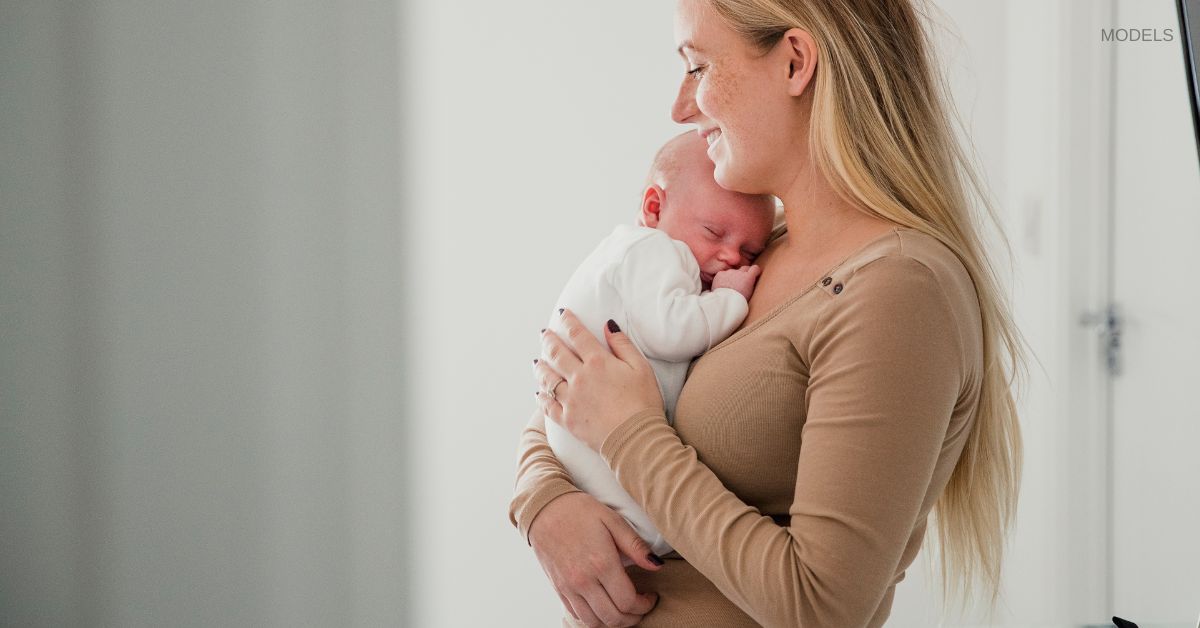Beyond simply fulfilling your aesthetic vision, your plastic surgeon should also consider your lifestyle and future goals—such as a desire to have children—when planning the details of your procedure. While there is no “right” time in a woman’s life to get breast implants, a candid discussion with your plastic surgeon about family planning can help guide you to an informed, forward-looking decision. In this blog post, we’ll discuss breast augmentation before and after babies and some of the most common concerns that may arise.
How Will Pregnancy Affect My Breast Implants?
From a structural integrity perspective, pregnancy should not cause any changes to your implants, which are designed for longevity and durability. However, the placement of your implants may shift as breast tissue expands during pregnancy and then shrinks after an infant has been weaned. These natural sizing changes may cause your breasts to sag or change shape and can even introduce asymmetry if one breast returns to pre-pregnancy size but not the other.
The length of time that has passed between breast augmentation and pregnancy can also have an impact. Full recovery from breast augmentation may take upwards of 6 months as the implants settle into their new position. If pregnancy occurs outside of this recovery period, your breasts will be more likely to tolerate hormonal and weight changes than if they are still in the “drop and fluff” stage of recovery.
Some women have also found an unexpected upside to their pre-pregnancy implants: As upper fullness in the breast deflates after nursing, their breast augmentation results may take on a more subtle, natural teardrop shape that some women prefer.
Can I Still Breastfeed After Having Implants?
Most breast augmentations will not impede a woman’s ability to breastfeed. However, for patients hoping to nurse their babies in the future, you may want to avoid a periareolar incision (one that encircles the areola). This incision poses a small risk of damaging the glands and ducts involved in breastfeeding. Please read our related blog post, “Can I Breastfeed With Implants,” for more detail.
Regarding the safety of breastfeeding after implants have been placed, the CDC has not identified any health concerns for the mother or child.
What Happens if I’m Not Happy With My Post-Pregnancy Breasts?
Whether you’ve undergone a breast augmentation before having kids or are considering one, plastic surgery can help restore (or reinvent) your breasts based on your cosmetic preferences. Many women will choose implants to recreate the fullness of their breasts during pregnancy; they may also pursue a breast lift at the same time to reshape and elevate sagging breasts.
Women who have previously had implants may similarly seek a breast lift after pregnancy. It is also common for women to exchange their implants for a larger size to counteract the lost volume and accommodate their breasts’ post-pregnancy shape. A breast augmentation revision surgery can be safely pursued as soon as six months after stopping breastfeeding or giving birth (for non-nursing mothers).
However, these procedures are best completed after you are done having children, as subsequent pregnancies may necessitate subsequent surgeries to correct any future areas of dissatisfaction.
Our gallery of before and after breast augmentation photos can show you the types of results that are possible among women with and without children. If you are considering breast augmentation and would like to discuss how to make this procedure work for your cosmetic and life goals, please request a consultation or call us at (804) 267-6009.


Leave a Reply